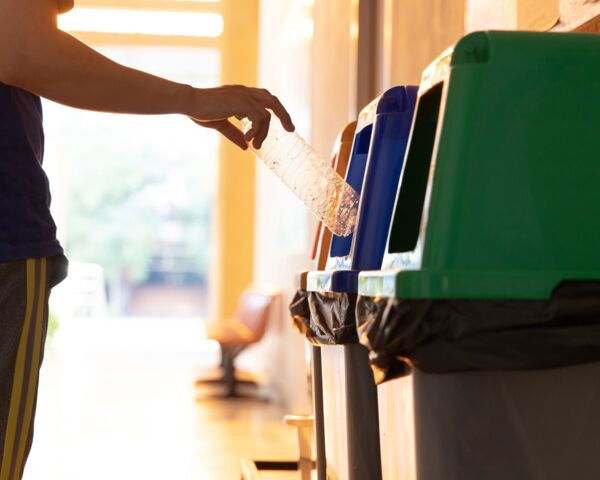CAIRNS 07 4053 6400 | info@cardzilla.com.au
TOWNSVILLE 07 4775 1399 | townsville@cardzilla.com.au
TRINITY PRINTERS 07 4031 5739 | sales@trinityprinters.com.au
Reducing Waste Intensity: Why It Matters and How to Do It
In Australia, the printing and embroidery industries play a vital role in everything from packaging and marketing to education and signage. But like many production-based sectors, it can also contribute significantly to material waste: offcuts, ink cartridges, packaging, and energy use are just the start. Reducing waste intensity – the amount of waste generated per unit of production – isn’t just an environmental concern. It’s a smart business strategy that supports sustainability goals, reduces operational costs, and strengthens your reputation with eco-conscious clients.
We recently had a proud moment in the eco-space for Trinity Printers! We have officially been recognised as a 1-Star Partner by the ecoBiz program, led by Business Chamber Queensland and supported by the Queensland Government. We have been recognised for reducing our waste intensity and we are honoured to have our efforts recognised. Our certification is valid from 12 June 2025 to 11 June 2026. The ecoBiz program supports Queensland businesses to reduce their energy, water, and waste intensity as well as working towards other sustainability goals. Waste reduction is important to us as a company and as individuals, especially living on the doorstep of the beautiful Great Barrier Reef.
Why Do I Need to Reduce Waste Intensity?
Australia has national waste targets and there is increasing pressure on businesses to reduce landfill contributions. Consumers, governments, and corporate clients are all expecting businesses to do their part. Reducing your waste output can also help your business align with certifications or industry sustainability benchmarks.
How We Reduce Waste Intensity?
By optimising material use, reusing offcuts where possible, and choosing sustainable supplies like recycled paper, eco-friendly inks, and biodegradable packing materials, where possible businesses can significantly cut down on landfill waste. In embroidery, this might include optimising order numbers to fit production. For signage, thoughtful design leads to efficient use of materials to minimise offcuts and reduce excess waste. As environmental expectations grow across Australia, adopting waste-reduction practices positions your business as both responsible and forward-thinking, which is something customers are increasingly looking for.
- Auditing/Tracking Waste
We measured our current waste streams. Knowing what we were throwing out and where it was coming from allowed us to better manage it. You can’t manage what you don’t measure! - Optimise Print Runs
We collate and run what we can together to save waste in materials and energy. - Use Sustainable Stock
Where possible we choose responsibly sourced materials, FSC-certified stock and if possible recycled stock. - Digital Proofing
We prefer to offer digital proofs rather than hard copy to minimise what simply becomes waste. - Reuse and Recycle
We reuse incoming packaging materials for outgoing orders if possible, and if any offcuts have potential for use they are stored and we use clean waste for packaging. - Staff Training and Culture
Encourage team-wide awareness. Small behaviour changes across a workforce, such as accurate sorting of waste or adjusting print settings, can have a big impact.
The Business Benefits
Reducing waste doesn’t just protect the planet, it protects your bottom line. Less waste means lower disposal costs, fewer materials ordered, and improved efficiency. It also strengthens your appeal to clients who are increasingly prioritising sustainability in their purchasing decisions.
By reducing waste intensity, you’re not just ticking a box. You’re setting your business up for long-term success in a more environmentally conscious Australia.

